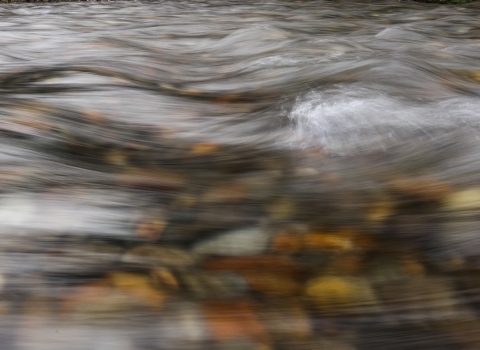Sacramento, Calif - Coastal wetlands are vitally important in protecting us from floods, filtering our water, supporting recreation and local economies, and providing habitat for fish and wildlife. Despite their importance, there has been a steady loss of coastal wetlands. Today, the U.S. Fish and Wildlife Service is awarding nearly $19 million to support 21 projects in eight coastal states to protect, restore or enhance nearly 14,000 acres of coastal wetlands and adjacent upland habitats under the National Coastal Wetlands Conservation Grant Program. Three projects in California were selected to receive funding.
State, local and Tribal governments, private landowners, conservation groups and other partners will contribute more than $20 million in additional funds to these projects. These grants will have wide-reaching benefits for local economies, people and wildlife – boosting coastal resilience, reducing flood risk, stabilizing shorelines and protecting natural ecosystems.
“Creating and restoring resilient natural systems is critical to ensuring that important habitat, wildlife and coastal communities continue to thrive for future generations,” said Service Director Martha Williams. “These grants invest in projects that will help mitigate the effects of climate change climate change
Climate change includes both global warming driven by human-induced emissions of greenhouse gases and the resulting large-scale shifts in weather patterns. Though there have been previous periods of climatic change, since the mid-20th century humans have had an unprecedented impact on Earth's climate system and caused change on a global scale.
Learn more about climate change on coastal areas, many of which have already been dramatically altered and stressed by storms, sea-level rise, human activity and invasive species invasive species
An invasive species is any plant or animal that has spread or been introduced into a new area where they are, or could, cause harm to the environment, economy, or human, animal, or plant health. Their unwelcome presence can destroy ecosystems and cost millions of dollars.
Learn more about invasive species .”
The 2023 grants will help recover coastal-dependent species, enhance flood protection and water quality, provide economic benefits to Tribes and underserved communities, increase outdoor recreational opportunities, and benefit habitat and wildlife at several national wildlife refuges.
States receiving funds this year are Alaska, California, Hawai‘i, Maine, North Carolina, South Carolina, Texas and Washington. The California projects funded by the 2023 grant program, include:
Big Canyon Tidal Marsh Restoration - Phase 3
The California State Coastal Conservancy is awarded $1 million to restore approximately 14.3 acres of coastal wetlands and associated uplands in the Big Canyon Nature Park in Upper Newport Bay in the City of Newport Beach. This is the final phase of a multi-phase water quality, habitat restoration and climate adaptation project in the Big Canyon Nature Park. The project will restore and enhance approximately 1,900 feet of tidal and creek channel, 2.8 acres of tidal marsh, 7.3 acres of transitional wetlands and 4.2 acres of coastal sage scrub. The project will restore tidal saltmarsh and establish a riparian riparian
Definition of riparian habitat or riparian areas.
Learn more about riparian corridor that integrates the previous phases of the restoration project. The restoration of the wetlands and sage scrub habitats and improved water quality will benefit numerous listed birds and increase opportunities for educational programming and public access.
Castroville to the Coast - Phase 1
The California Coastal State Coastal Conservancy is awarded $1 million to protect 24 acres of coastal floodplain along the Tembladero Slough between the Town of Castroville and Salinas River State Beach through fee title acquisition or a conservation easement conservation easement
A conservation easement is a voluntary legal agreement between a landowner and a government agency or qualified conservation organization that restricts the type and amount of development that may take place on a property in the future. Conservation easements aim to protect habitat for birds, fish and other wildlife by limiting residential, industrial or commercial development. Contracts may prohibit alteration of the natural topography, conversion of native grassland to cropland, drainage of wetland and establishment of game farms. Easement land remains in private ownership.
Learn more about conservation easement .
Prairie Creek Floodplain Restoration - Phase 3B
The California State Coastal Conservancy is awarded $1 million to restore 44.26 acres of palustrine wetlands and modify and restore 1,676 feet of streambank in the Prairie Creek floodplain in Humboldt County, California.
Wetlands in coastal watersheds are diverse and complex ecosystems that are vital to the nation’s economy and an important part of the nation’s natural heritage. Coastal wetlands in the United States include both salt marshes in estuaries and freshwater wetlands that extend inland within the coastal drainages. They provide crucial habitat for fish, birds and other wildlife, including breeding grounds, nurseries, shelter and food.
The Service awards grants of up to $1 million to states based on a national competition, which enables states to determine and address their highest conservation priorities in coastal areas. Since 1992, the Service has awarded more than $450 million in grants under the program. More information is available online at: https://www.fws.gov/service/national-coastal-wetlands-conservation-grants.
The National Coastal Wetlands Conservation Grant Program is administered by the Service and funded in part by taxes or import duties collected from the sale of recreational fishing equipment, boats, electric motors and motorboat and small engine fuels under the authority of the Dingell-Johnson Sport Fish Restoration Act. The billions of dollars generated through recreational angling, boating, waterfowl hunting and birdwatching benefit communities in the vicinity of wetlands restoration projects.
The U.S. Fish and Wildlife Service works with others to conserve, protect and enhance fish, wildlife, plants and their habitats for the continuing benefit of the American people. For more information, visit www.fws.gov and connect with us on social media:
Facebook, Instagram, Twitter, LinkedIn, Flickr, and YouTube.



